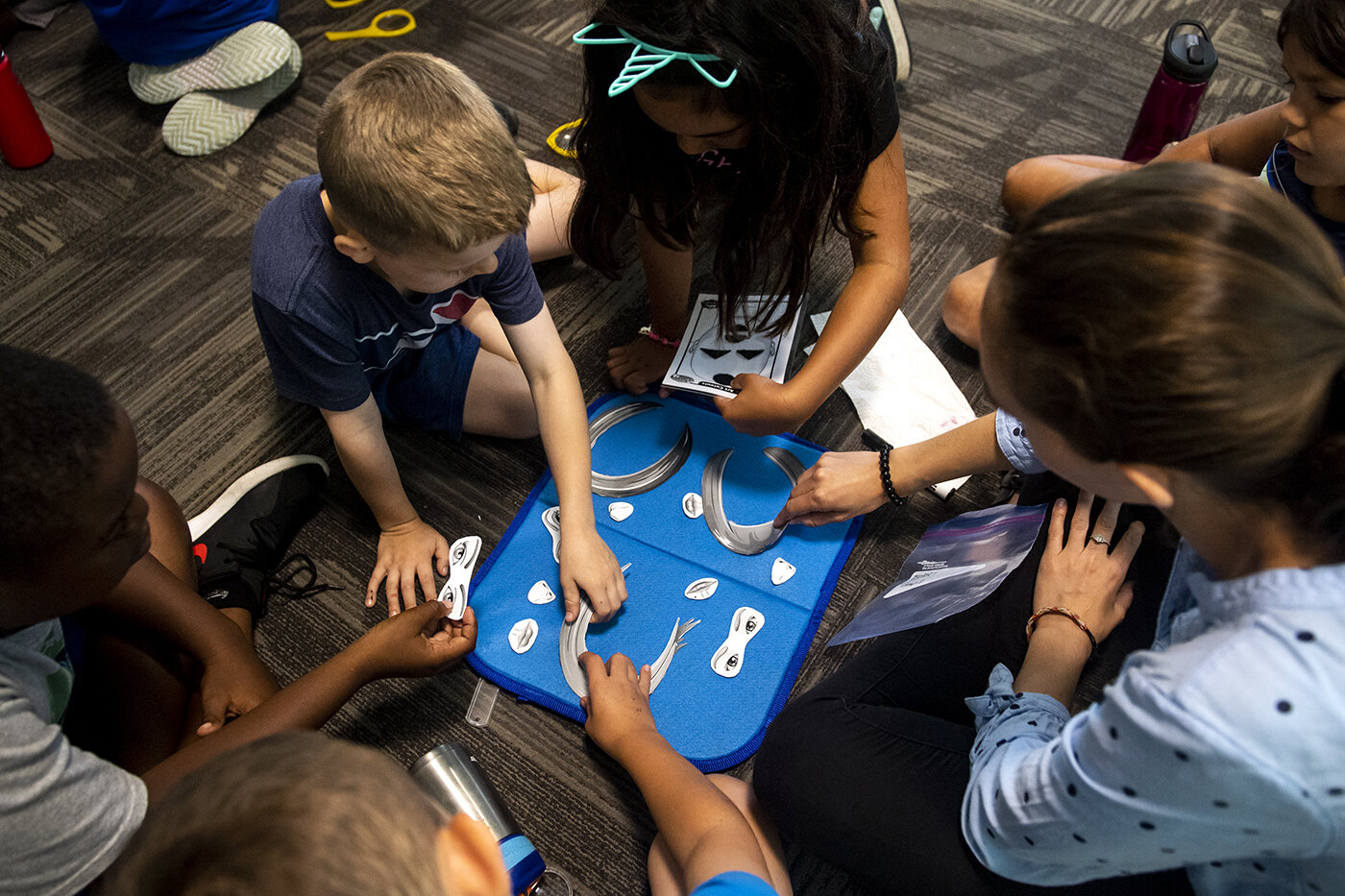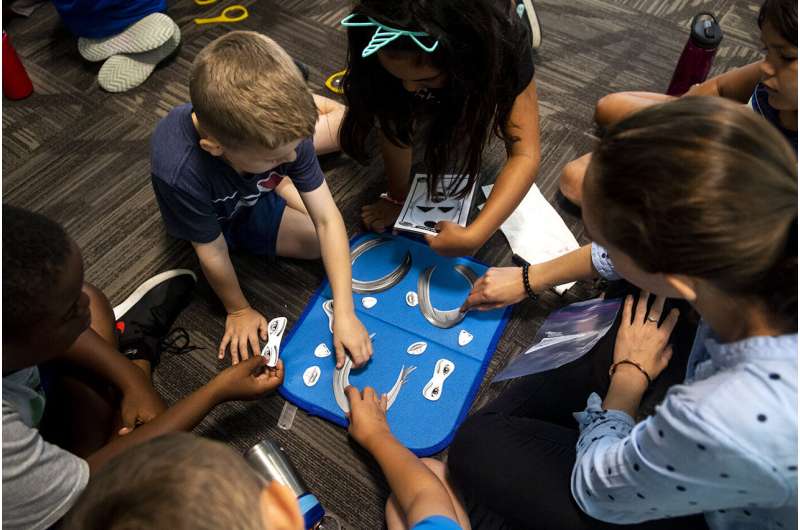

Schools in the U.S. resumed in-person learning last year, but enrollment in public schools across the country has failed to recover to pre-pandemic levels and, in some cases, continued to drop.
About 1.2 million students have left public schools in the U.S. since the beginning of the COVID-19 pandemic in 2020, according to a recent national survey. Schools in the nation’s urban centers––like Los Angeles, New York City, and Chicago––have been particularly affected. In Los Angeles, enrollment in non-charter public schools decreased by almost 50,000 between the 2019–2020 school year and the 2021–2022 school year, according to the California Department of Education. Boston Public Schools enrollment has dropped by about 8.5% since October 2019, accounting for a decrease of about 4,300 students.
In the U.S., declining enrollments have concrete impacts on public schools, since enrollment is directly tied to per-student aid from state and federal governments. Low enrollment also impacts school budgets and long-term facilities plans. As a result, school districts across the country have had to make tough decisions, slashing budgets, laying off teachers and administrative staff, or even closing schools. That’s on top of dealing with a rapidly expanding achievement gap, especially for students of color.
But could the precipitous drop in public school enrollment potentially be a good thing for some students?
Although plummeting enrollment numbers impact public school districts in concrete ways, Wendi Williams, dean of the School of Education at Mills College, says it could be. There are proven advantages to smaller classroom sizes, she said, including a greater sense of connection and community. Mills College is set to merge with Northeastern University in July.
Williams recalled attending public schools in Southern California during the 1980s and 1990s at a time when class sizes routinely ballooned to more than 30 students in a classroom.
“We’ve had overcrowded classrooms, so what may look like too few students in a classroom may be the right size of the classroom for effective learning and development and community engagement, especially for kiddos who need to ease back into social engagement after the pandemic,” Williams says.
The pandemic is not solely to blame for the nationwide decreases in enrollment. Lower birth and immigration rates had already led to a nationwide downward trend in public school enrollment prior to the pandemic, says Williams. However, the pandemic has exacerbated the situation.
In Boston, public school enrollment had been steadily declining since 2015, but the pandemic precipitated a rapid drop. This year alone, the student body dropped by 4%.
According to Williams, there are several possible explanations for the drop-off. Frustrated by the shift to remote instruction and mask mandates in schools, some parents pulled their children out of public schools and sent them to private schools. Private schools initially experienced decreased enrollment during the pandemic––a 6.4% decrease between the 2019–2020 and 2020–2021 school years, according to the National Association of Independent Schools. However, the National Catholic Educational Association reported a 3.8% enrollment increase in 2021–2022, the first increase in two decades.
Due to job loss in their families, the ongoing economic impacts of the pandemic, or COVID-related health issues, some students, especially students of color, faced added challenges during the pandemic, says Cliff Lee, associate professor of education at Mills College.
“That had a significant impact on the mental health, spiritual health, emotional health of the students and families, and it’s not like it ended,” Lee says. “Families are continuing to experience the challenges of COVID that’s still ongoing, along with inflation and economic uncertainties.”
Meanwhile, other families turned to home-schooling and took advantage of the flexibility offered by remote work.
“I think that parents and children have seen freedom in that,” Williams says. “Many folks have not gone back to work or have had more flexibility around remote options and they’ve worked out the scheduling and the dynamics of life with schooling. And with the world being slightly more open, it means they can balance in and out of home time. I think it’s changed things.”
While Williams has been energized by how involved parents have become in their children’s education in recent years, she also cautioned that there are certain things teachers are fundamentally better equipped to do.
“Knowing your child and knowing who your kid is as a learner is not the same as having the deep understanding around pedagogical practices, different types of learners, particularly in the space of special education and differentiated learning and thinking about the wide range of neuro-divergence among young people and how that can and should be supported within a school setting with multiple children, as opposed to one child,” Williams says.
In a public school setting, one-on-one education is a luxury. However, Williams says smaller class sizes are generally one way to help students and teachers enhance classroom learning. Lower enrollment could provide an unexpected boon in this regard.
“[Students] need more time to learn and to be known, and a good teacher needs more space and time to not only know them individually but to create the possibilities and opportunities for other children to know them well and for the other parents to know the kids well too,” Williams adds.
However, embracing the small classroom movement is about more than just smaller class sizes.
“It gets down to money and resources, ultimately, but what’s best for the children may not always be what’s best for the budget,” Williams says.
Williams was hesitant to say whether there will be an upswing or further downswing in enrollment, although she was adamant that the last two years of decreased enrollment are just another fluctuation in a long series of ups and downs for the public school system. Instead, she says there will likely be increases and decreases based on “local dynamics” in certain cities and states.
“Places that are cheaper to live will likely see an upswing,” Williams says. “I’m in the Bay Area. It’s expensive, and people choose to move away to suburban, even rural areas because it’s more affordable in terms of housing, and therefore the public schools in those areas may see an upswing.”
Study: Demand for educational choices, implications for schools during pandemic
Northeastern University
Citation:
Could the precipitous drop in public school enrollment be good for students? (2022, June 23)
retrieved 23 June 2022
from https://phys.org/news/2022-06-precipitous-school-enrollment-good-students.html
This document is subject to copyright. Apart from any fair dealing for the purpose of private study or research, no
part may be reproduced without the written permission. The content is provided for information purposes only.

